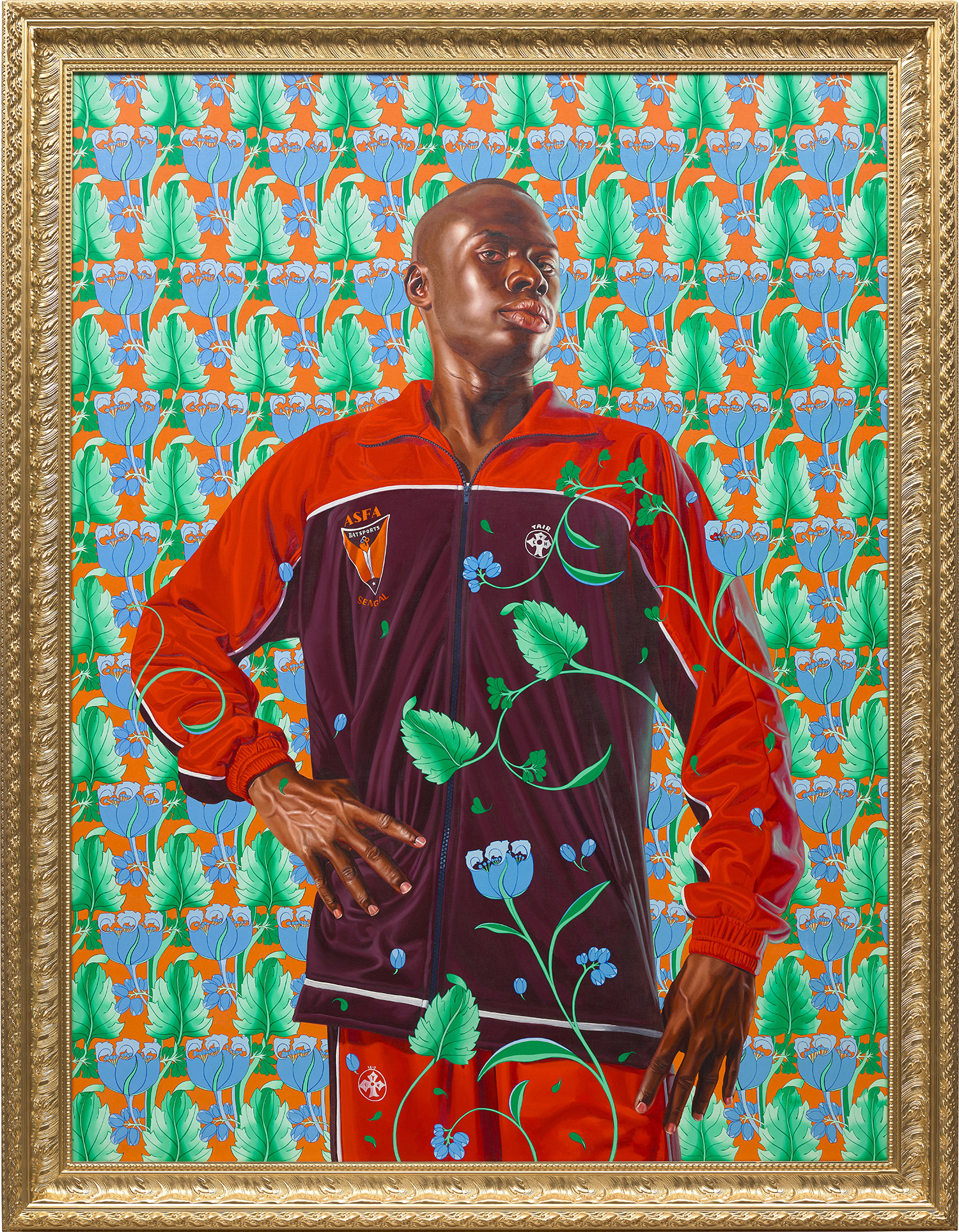

10
Kehinde Wiley
Ferdinand-Philippe-Louis-Henri, Duc d'Orléans
signed and dated 'Kehinde Wiley 2014' on the reverse
oil on linen, in artist's frame
239 x 185.7 cm (94 1/8 x 73 1/8 in.)
Painted in 2014.